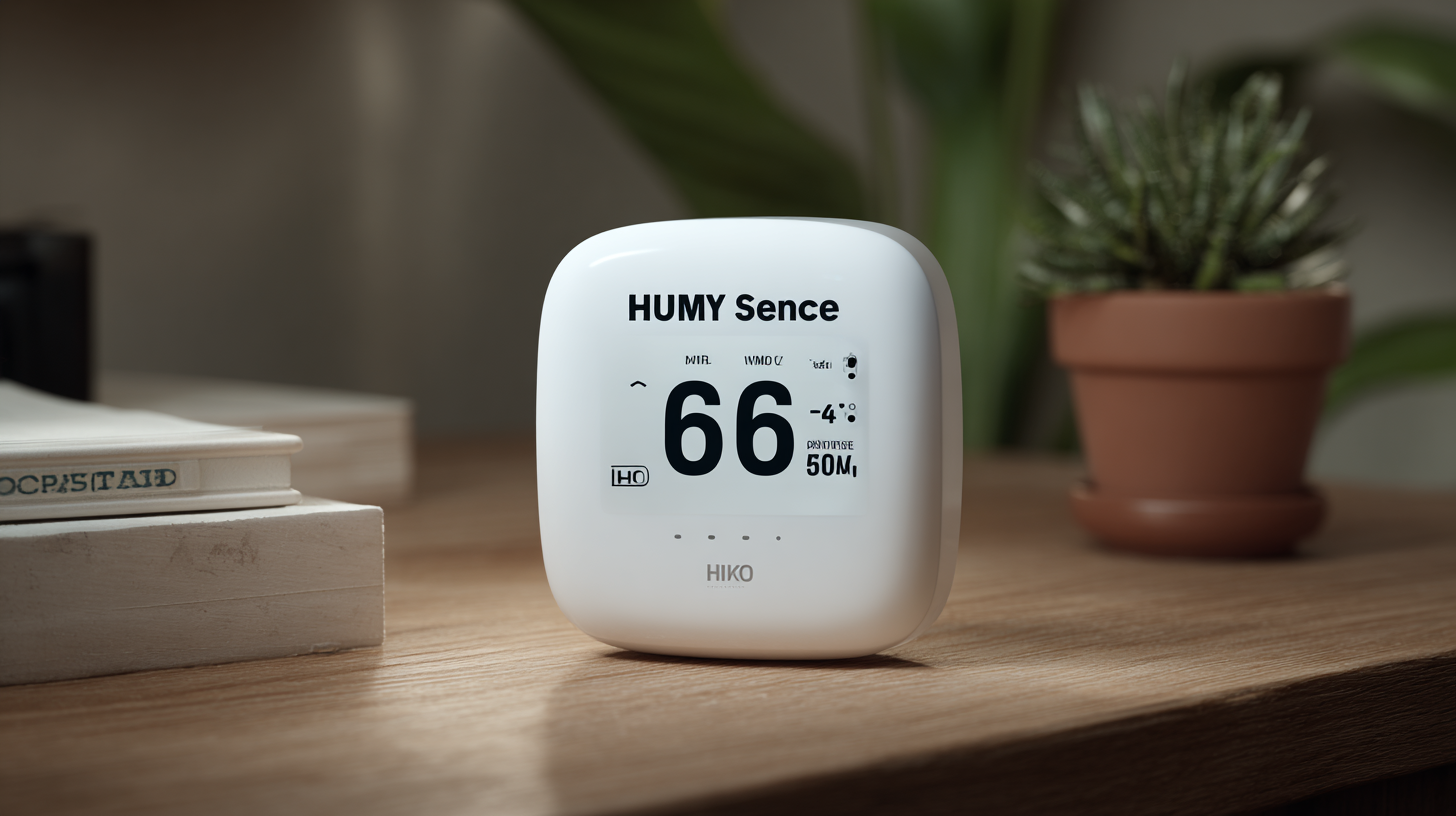
-
Home
-
Product Center
-
Application
-
Support
-
JT Cloud
-
About Us
-
Contact Us
Leave Your Message

In today’s rapidly evolving technological landscape, understanding industry standards for the best humidity sensor for home use has become increasingly crucial for homeowners seeking optimal indoor air quality and comfort. As more people prioritize their living environments, the demand for reliable and accurate humidity sensors is on the rise. This blog will delve into expert data insights on the top humidity sensors available in the market, highlighting the features and benefits that distinguish leading products. We will also explore the significance of purchasing from manufacturers that are globally recognized for their quality, ensuring that you invest in a high-performance humidity sensor for home applications that meets rigorous standards. By the end of this discussion, you'll be better equipped to make informed decisions and enhance your home's overall atmosphere.

When selecting the best humidity sensor for home use, several key factors must be considered to ensure optimal performance and reliability. First and foremost, accuracy plays a critical role; a study published by the National Institute of Standards and Technology (NIST) indicates that high-quality home humidity sensors should offer an accuracy of ±2% relative humidity (RH). This level of precision is essential for maintaining a comfortable indoor environment and preventing issues like mold growth and structural damage.
Another important aspect is the sensor's response time. According to the International Society of Automation, a sensor that reacts within 30 seconds to changes in humidity levels is ideal for residential applications. Rapid response times enable homeowners to receive real-time data, allowing for timely adjustments to heating, ventilation, and air conditioning (HVAC) systems. Additionally, durability and build quality cannot be overlooked; sensors designed for home use should feature long-lasting components and resistance to environmental influences, ensuring they remain functional over time. These factors, combined with user-friendly interfaces and connectivity features, are pivotal in choosing the right humidity sensor for maintaining a healthy home environment.

When selecting the best humidity sensors for home use, a comparative analysis reveals significant variations in performance metrics across leading brands. According to a recent report by MarketsandMarkets, the global humidity sensor market is projected to reach USD 2.96 billion by 2026, growing at a CAGR of 6.6% from 2021. This growth is driven by increased demand for HVAC and smart home technologies, highlighting the need for high-accuracy, reliable sensors.
Data from a study published in the Journal of Building Performance indicates that top-performing humidity sensors can have an accuracy of ±2% Relative Humidity (RH) and a response time of under 5 seconds. Brands such as Honeywell and Sensirion are often cited for their exceptional sensor accuracy and durability. For instance, the Honeywell HIH-4000 series provides not only a robust sensing solution but also integrates seamlessly with IoT systems, thus offering homeowners enhanced control over indoor climates. Additionally, the Sensirion SHT35 stands out for its long-term stability and low power consumption, making it an ideal choice for energy-efficient homes.
Considering expert insights and empirical data, evaluating these performance characteristics is crucial for making informed purchasing decisions, ensuring optimal environmental conditions in residential spaces.
Understanding humidity measurement units is crucial for maintaining a comfortable and healthy home environment. The two primary units used to quantify humidity are relative humidity (RH) and absolute humidity (AH). Relative humidity is expressed as a percentage, indicating the amount of moisture present in the air compared to the maximum it can hold at a specific temperature. According to the American Society of Heating, Refrigerating, and Air-Conditioning Engineers (ASHRAE), maintaining indoor relative humidity levels between 30% and 50% is optimal for comfort and health. This range helps mitigate mold growth and respiratory issues, particularly in humid climates.
On the other hand, absolute humidity measures the total amount of water vapor in the air, typically expressed in grams per cubic meter (g/m³). A report by the World Health Organization highlights that excessive absolute humidity can lead to dampness in homes, fostering conditions for mold and dust mites, potentially exacerbating asthma and allergy symptoms. For homeowners, understanding these units equips them to choose the best humidity sensors, ensuring they can monitor and adjust their indoor climate effectively. Employing reliable tools that utilize these measurements can lead to better indoor air quality, contributing to overall well-being and comfort.

Proper placement and calibration of humidity sensors are essential for ensuring their accuracy and reliability in monitoring indoor environments. When positioning these devices, it's important to avoid locations that may be influenced by direct sunlight, drafts, or heat sources like radiators. Ideally, humidity sensors should be placed in a central area of the room, away from walls and obstructions, to provide a more representative reading of the overall space's humidity levels.
Calibration is another critical aspect that contributes to the performance of humidity sensors. Regular calibration against a reliable standard can help maintain the accuracy of the readings over time. For home use, consider using a dual-probe system that measures both temperature and humidity, which allows for better calibration adjustments based on specific environmental conditions. Just like the best practices observed in sensor calibration for various applications, such as marine buoys and air quality measurements, ensuring your humidity sensors are regularly checked and adjusted guarantees optimal performance, contributing to a comfortable and energy-efficient home environment.
When it comes to selecting a humidity sensor for your home, avoiding common mistakes can significantly improve both your indoor air quality and the lifespan of your devices. One prevalent error is overlooking the calibration process. According to a study published by the American Society of Heating, Refrigerating and Air-Conditioning Engineers (ASHRAE), uncalibrated sensors can lead to erroneous humidity readings, which can result in inappropriate actions that compromise comfort. Ensuring your sensor is calibrated to industry standards before installation is crucial for accurate performance.
Another frequent pitfall is neglecting to consider the environmental conditions where the sensor will be placed. Humidity sensors typically perform best within specific temperature and humidity ranges, as outlined in the International Society of Automation (ISA) guidelines. Placing a sensor too close to sources of humidity like kitchens or bathrooms can skew its readings.
**Tip:** Always choose a sensor with a clear indication of its optimal operating range and mount it in a location that reflects the general living area rather than isolated pockets of humidity.
Additionally, many homeowners fail to regularly maintain their humidity sensors. A report from the National Institute of Standards and Technology (NIST) indicates that routine checks can enhance performance and can prevent up to 20% of errors in readings.
**Tip:** Schedule periodic inspections and recalibrate your devices at least once a year to ensure their accuracy and reliability.